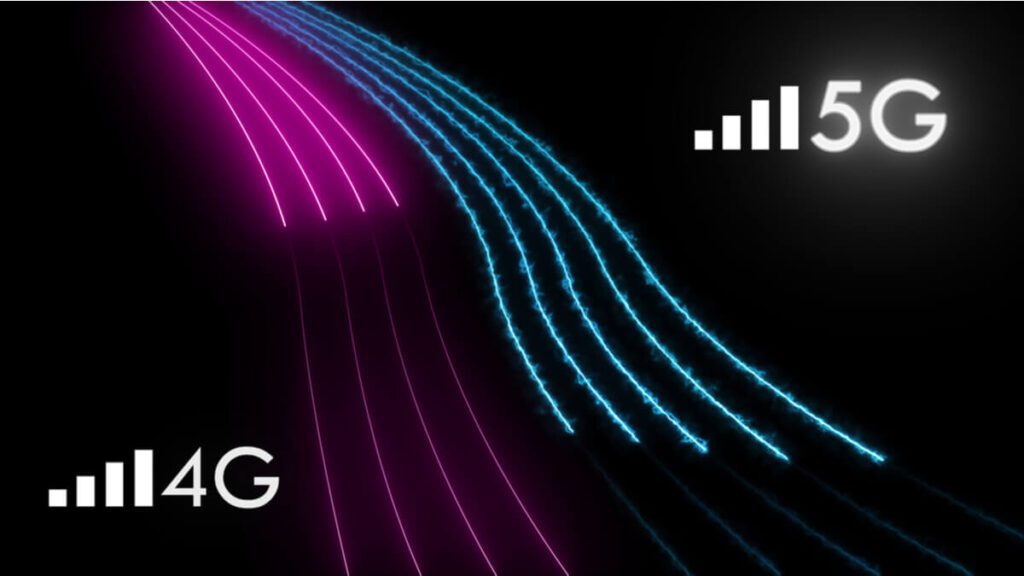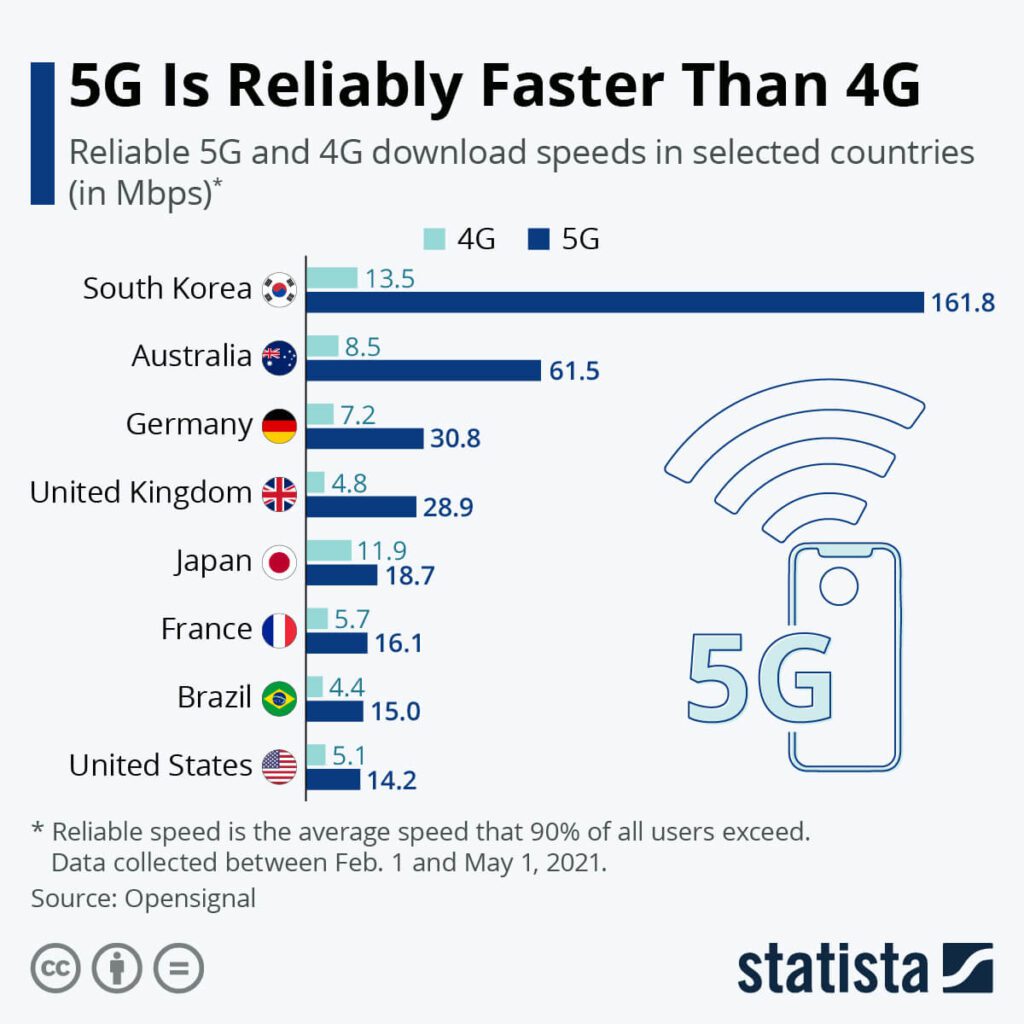How fast is 5G compared to 4G?

The fifth generation of mobile networks has been “the talk of the town” and will continue to be so for the foreseeable future, constituting the basic element for the evolution of countries and communities, especially transforming cities into smart ones and digitizing societies.
5G comes after 4G, however, each network has its own characteristics regarding speed and consistency that differ from the other.
4G vs 5G speed
The comparison between 4G and 5G can be as follows: With 5G reaching 10 gigabits per second – up to 100 times faster than 4G, fifth generation networks can deliver the level of performance needed for an increasingly connected society.
As such, downloading a high-definition film over a 4G network, for example, takes 50 minutes on average, but takes nine on 5G.
Therefore, connectivity requirements vary based on what the network is being used for.
In other words, driving your connected car and streaming a film on your smartphone demand different connectivity levels that aren’t always available with 4G.
Hence, the rollout of 5G can solve this because “network slicing” becomes much easier – when the network is split to tailor speed, capacity, coverage, encryption, and security by reassigning resources from one ‘slice’ of the network to another ‘slice’ that needs it.
5G vs 4G speed test
As such, societies are excited to connect to 5G, which will translate to having more than 438 million 5G connections around the world, according to French multinational company Thales.
So, connectivity has moved from simply providing access to the internet to powering complicated infrastructures. As in smart cities connect everything from smartphones, homes, and cars to traffic and garbage collection systems using the Internet of Things (IoT) technology.
However, a new network performance level is needed, especially with the growing number of devices and an outburst of data.
This requires wireless technologies, from Bluetooth and WiFi to 3G and 4G LTE, rely on performance trade-offs with the IoT devices on their networks.
Better performance
To have a better performance with the fifth-generation technology means a lower latency rate, which also translate to the delay between sending and receiving information.
For 4G, this is 200 milliseconds, not far off the 250 milliseconds it takes for humans to react to visual stimuli, while the 5G latency rate is significantly lower: at just 1 millisecond.
In parallel, the development of news services and devices is associated with using 5G networks to send and receive information quickly. Those devices are particularly connected cars and vehicle-to-vehicle information (aka V2X), virtual-reality gaming, remote surgical operations, and translation software.

Also, according to a report by testing firm Rootmetrics that shows network performance at the end of 2020, giving us an insight at the differences between 5G vs. 4G vs 3G. the results presents 5G with the best median download speeds, significantly so, in the case of Verizon.
That’s because Verizon built its initial 5G network on mmWave technology which is superfast with speeds often approaching — and even surpassing the 1 Gbps mark.
Operators and companies have been competing to get the best and fastest 5G to serve their customers in the best way possible.
